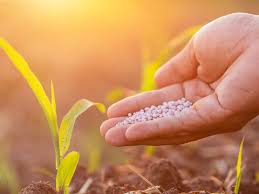
Nov . 30, 2024 04:00 Back to list
Balanced Water Soluble Fertilizer for Optimal Plant Growth and Nutrient Delivery
Understanding Water-Soluble Fertilizer 20-20-20 with Trace Elements
Water-soluble fertilizers have become an essential tool in modern agriculture and gardening. Among the various formulations available, the 20-20-20 fertilizer stands out due to its balanced nutrient content and versatility. This article will delve into what 20-20-20 fertilizer is, its benefits, usage, and the importance of trace elements in promoting healthy plant growth.
What is 20-20-20 Fertilizer?
The numbers in a fertilizer's N-P-K ratio represent the percentage by weight of nitrogen (N), phosphorus (P), and potassium (K) in the product. In the case of 20-20-20, it contains equal parts of each primary nutrient 20% nitrogen, 20% phosphorus, and 20% potassium. This balance ensures that plants receive essential nutrients crucial for their growth and development.
Benefits of 20-20-20 Fertilizer
1. Comprehensive Nutrient Supply The balanced formulation provides a steady nutrient supply for plants, which is crucial during their active growth phases. The nitrogen supports leaf growth, phosphorus promotes root and flower development, and potassium enhances overall plant health and stress resistance.
2. Versatility Water-soluble 20-20-20 fertilizer can be used for various plant types, including vegetables, fruits, flowers, and ornamental plants. Its compatibility with different growing conditions makes it a favorite among gardeners and farmers alike.
3. Immediate Availability Being water-soluble means that the nutrients are immediately available to plants once applied. This quick absorption is particularly beneficial during periods of rapid growth, such as in spring or during the fruiting stage.
4. Improved Soil Health Regular use of this fertilizer can enhance microbial activity in the soil, leading to better soil health. A thriving soil ecosystem is vital for sustainable agricultural practices.
Importance of Trace Elements
water soluble fertilizer 20-20-20+te

While the primary N-P-K nutrients are critical, trace elements (or micronutrients) are equally important for optimal plant health. Common trace elements in water-soluble fertilizers like 20-20-20 include iron, manganese, zinc, copper, boron, and molybdenum. Though required in smaller quantities, these elements play crucial roles in various plant processes
- Iron Vital for chlorophyll production, iron is essential for photosynthesis. - Zinc Involved in protein synthesis and hormone regulation, zinc is important for plant growth and development. - Boron This micronutrient aids in cell division and enhances flower and fruit development.
The addition of trace elements to a 20-20-20 fertilizer ensures that plants have access to all the necessary nutrients for robust growth and development.
Application Tips
1. Dilution Always follow the manufacturer’s recommendations for dilution rates. Typically, mixing 1-2 tablespoons of the fertilizer per gallon of water is standard, but this can vary based on the specific needs of your plants.
2. Frequency For optimal results, apply every 1-2 weeks during the growing season. However, it’s crucial to monitor plant health and adjust the frequency based on growth responsiveness.
3. Testing Soil Before applying any fertilizer, conducting a soil test is advisable. This allows you to determine existing nutrient levels and pH, ensuring you provide the right amount of fertilizer.
4. Watering Apply the fertilizer solution after watering the plants to prevent potential root burn and maximize nutrient uptake.
Conclusion
Water-soluble fertilizer 20-20-20 combined with trace elements offers a balanced nutrient solution for a multitude of plants. Its versatility, immediate nutrient availability, and role in promoting healthy growth make it a valuable asset for gardeners and agricultural producers alike. By understanding how to effectively utilize this fertilizer, growers can achieve optimal results and ensure that their plants thrive throughout the growing seasons.
-
Premium Organic Manure Compost for Eco Gardens
NewsAug.01,2025
-
Organic 10-10-10 Fertilizer | Balanced Plant Nutrients
NewsJul.31,2025
-
Premium Amino Acid Fertilizer | Rapid Plant Growth Booster
NewsJul.31,2025
-
10 10 10 Fertilizer Organic—Balanced NPK for All Plants
NewsJul.30,2025
-
Premium 10 10 10 Fertilizer Organic for Balanced Plant Growth
NewsJul.29,2025
-
Premium 10 10 10 Fertilizer Organic for Balanced Plant Growth
NewsJul.29,2025
